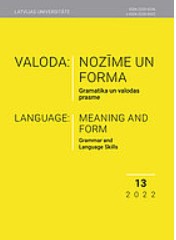Tähendussuhetest eesti murretes
The article addresses the semantic differences of certain standard Estonian words across Estonian dialects as revealed by semantic maps. Word use appears to be the most distinctive for the main dialect groups of North Estonian and South Estonian. Within the South Estonian area it is Tartu and Võru dialects that have the most features in common. Semantic features reminiscent of Mulgi dialect now occur in the western region of Tartu dialect, in the southern region of Tartu dialect and the western region of Võru dialect. On the other hand, Mulgi dialect has features in common with the vernaculars of Pärnumaa and northern Viljandimaa. In the North-Estonian area, Insular dialect stands out for its peculiar word usage, which often differs, in turn, between the two largest isles (Hiiumaa and Saaremaa). There is also a perceptible difference between the western and eastern wings of the North Estonian main dialect group, although the boundary is rather fuzzy. The semantic variants of an Estonian dialect word seldom stop at the linguistic boundary of Estonian, usually continuing in use in cognate languages. Comparing the areal distribution of a word and its senses in dialects and place names we can see that there is some geographic and semantic coincidence, but never absolute.
More...
